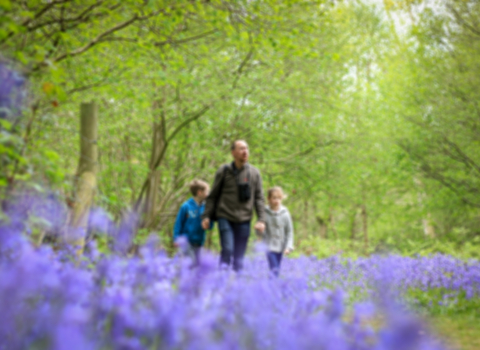Much of our woodland wildlife that is now endangered used to rely on key natural processes to survive. This might include trees naturally falling over to create light for wildflowers and shrubs, large herbivores keeping areas open through grazing, and dead and decaying wood providing habitat for insects. Without some form of management many of our woodlands will become dark, over-shaded and dominated by tall, overcrowded trees without any variation in structure, age or cover.
Warwickshire is now among the least wooded counties in the UK
Historically, much of the woodland in Britain and across Warwickshire has been lost. That which remains may have suffered through both lack of management or wholesale removal of trees. In addition, the planting and or colonisation of non-native trees may have reduced the native wildlife that woodlands can support. Warwickshire is now among the least wooded counties in the UK, which as a country, is one of the least wooded in Europe. This makes our woodlands precious and important within the landscape.
We're committed to maintaining and enhancing the woodlands under our management, and where appropriate restoring those woodlands which may have suffered in the past to be more in keeping with native British broad-leaved woodland. Remaining UK woodlands are only fragments of the huge, sprawling woodlands of the past and many important species that drive natural processes have been lost. This means the habitats that endangered species used to rely on occur less frequently in individual woodlands. This has contributed to a significant decline in woodland wildlife.
Woodlands made up of similar sized and aged trees with little variation in tree species can only support a limited number of plant and animal species. By actively managing woodlands (and mimicking the natural processes that used to occur), through tree felling, coppicing, creating and cutting open areas, encouraging dead wood, and planting new trees, we are able to create light and shade, wetter and drier areas and ensure varied structure to the woodland, which will support a much greater range of woodland species. We are also protecting woodlands for the future, by allowing space for the next generation of trees to replace those that exist now and by making them resistant to diseases and pests that target individual tree species.
All woodlands in the UK have been managed through felling trees at some stage in their life. Indeed, the reasons people and wildlife may benefit from a particular woodland could be due to the way it has been managed in its past. For example, large veteran oaks provide much visual and wildlife value, but would not exist without the felling of trees around them over their lifetime.
Our work aims to recreate the right conditions to prevent the further loss of wildlife. By creating woodland made up of trees of varying heights, ages and species we are creating a wide range of places where different plants and animals can thrive.




